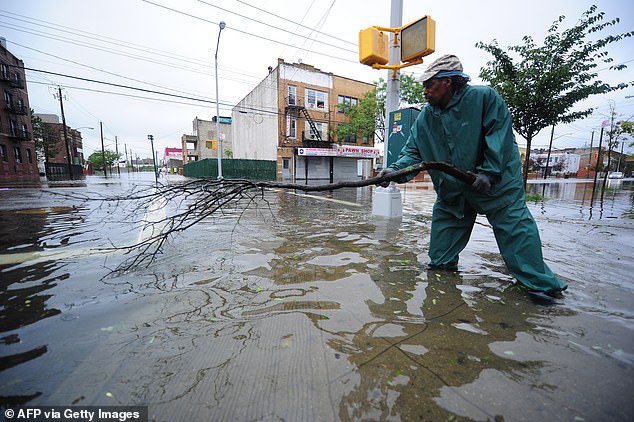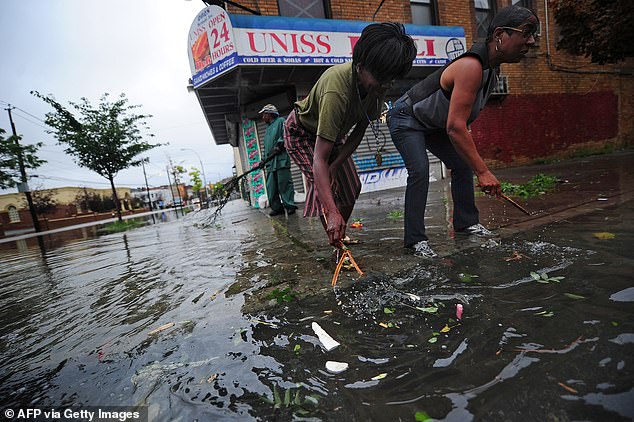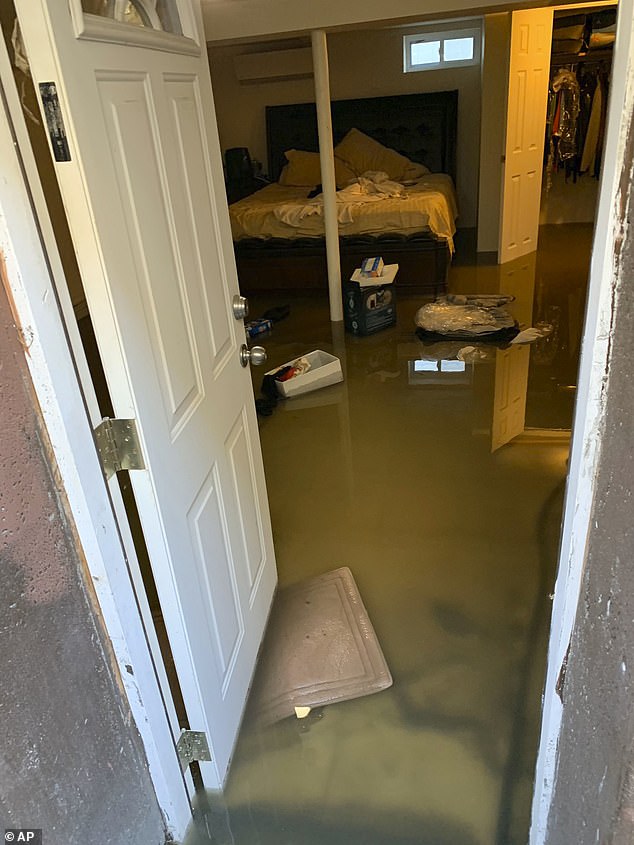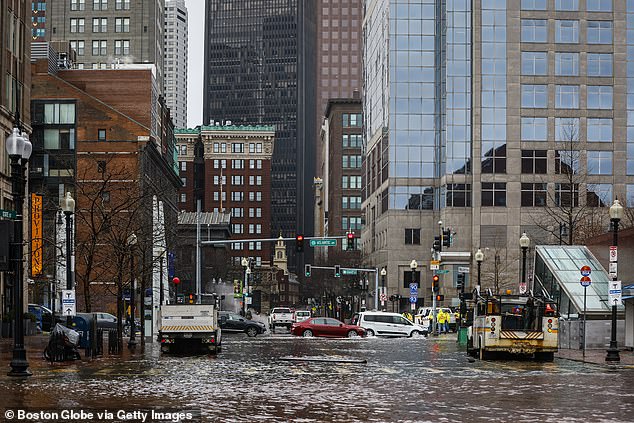Major coastal cities such as New York, Boston and Philadelphia could be “inundated” by untreated sewage flooding streets and basements, a study has warned.
Scientists have determined that pipe networks dating back to the mid-1850s, coupled with rising sea levels and increased rainfall, are enough to overload systems and send sewage flowing into the streets.
The pipes originally discharged into streams and rivers before being rerouted to wastewater treatment facilities that crisscross cities.
The systems were also designed to handle up to 1.75 inches of rain per hour in areas like New York City, for example.
But new models predict that rainfall amounts could exceed two inches per hour over the next three decades.
Older coastal cities such as New York, Boston and Philadelphia could be “inundated” by raw sewage pouring into streets and basements. Pictured: Boston residents suffered coastal flooding during heavy rains in January 2024

New York City is one of the major metropolises at risk of sewage flooding because the pipes, built in the mid-1850s, were not designed to withstand rainfall exceeding 1.7 inches (4.4 cm) per hour. Pictured: A man tries to unclog a sewer grate after Hurricane Irene hit Coney Island in 2011.
In the new study, published in the journal Water management modellingResearchers at Drexel University looked at Camden, New Jersey, a flood-prone area, to determine how climate change could affect systems along the East Coast.
The city, which borders the Delaware River, built its system in 1845, making it comparable to those in New York, Boston and Philadelphia.
The team created climate models to simulate future flooding and combined sewer overflows (CSOs) — when systems collect stormwater runoff, sewage and industrial waste in a single pipe — by 2100.
Precipitation in the city is already up to 10 percent higher than the baseline established in 1999, but the new model showed that future rainfall will increase by 30 percent.
It also determined that sea levels will rise nearly six feet by the end of the century, causing sewage flooding to increase by 21 to 66 percent.
The results suggest that sewage-induced flooding would last for almost 65 days.
The model found that increases in rainfall intensity trigger flooding lasting nearly 65 days.

Approximately 40 million people live in areas with combined sewer systems, so it is essential to take steps to mitigate the risk of overflow. Pictured: Coney Island residents attempt to unclog a sewer grate in 2011

In 2019, sewage flooded around 300 homes in Jamaica, Queens, destroying furniture, electronics and other belongings as putrid waste spread throughout the area. Pictured: Sewage backup that flooded Cynthia McKenzie’s home in Jamaica, Queens, in November 2019
The team proposed a solution that would involve diverting stormwater upstream away from Cramer’s Hill, the main sewer system located in the northern corner of Camden, but researchers said they are still looking at other possible options.
“It’s exciting to be working with them now to develop solutions that can also reduce flooding and make Camden neighborhoods more resilient to climate change,” said Franco Montalto, a professor at Drexel University and senior author of the study.
In recent years, federal agencies have claimed they are taking steps to address sewage flooding, but researchers said the efforts are not enough.
The Department of Environmental Protection has unveiled a $62 million project to improve infrastructure by replacing sewers with larger pipes, but it failed to prevent New York City residents’ basements from flooding during heavy rains last year.
In September, a storm saturated parts of New York City, sending sewage flooding into streets, subway stations and people’s homes through more than 7,400 miles of pipes.
“We’re in this new territory where we’re seeing higher intensity rainfall like this,” said Daniel A. Zarrilli, a former climate policy adviser to the mayor. New York Times.
“Once the capacity of the sewers themselves is exceeded, that’s what causes these blockages. When the pipes can’t handle it, a blockage occurs.”
Earlier this year, a Boston resident said three separate storms caused his home to overflow with sewage each time, and his efforts to block the floodwaters only made matters worse.
“It started coming out of the shower right there,” he said. CBS Newsadding that when he tried to block the shower drain the sewage came up the toilet.
“Over the course of 15 or 16 hours, we’re probably talking about thousands of gallons going through here,” he said.
‘Going through the back of the house, into my dining room, into my bedroom and into the kitchen, like everything was ruined.’
In 2019, sewage flooded around 300 homes in Jamaica, Queens, destroying furniture, electronics and other belongings as putrid waste spread throughout the area.
“It’s a mess,” said one resident who posted photos of murky water covering the floor of a basement bedroom. AP News.
“When you open it, it smells bad. It makes you want to vomit… The smell is just unbelievable,” he said.
Approximately 40 million people live in areas with combined sewer systems, so it is essential to take measures to mitigate the risk of overflow.


